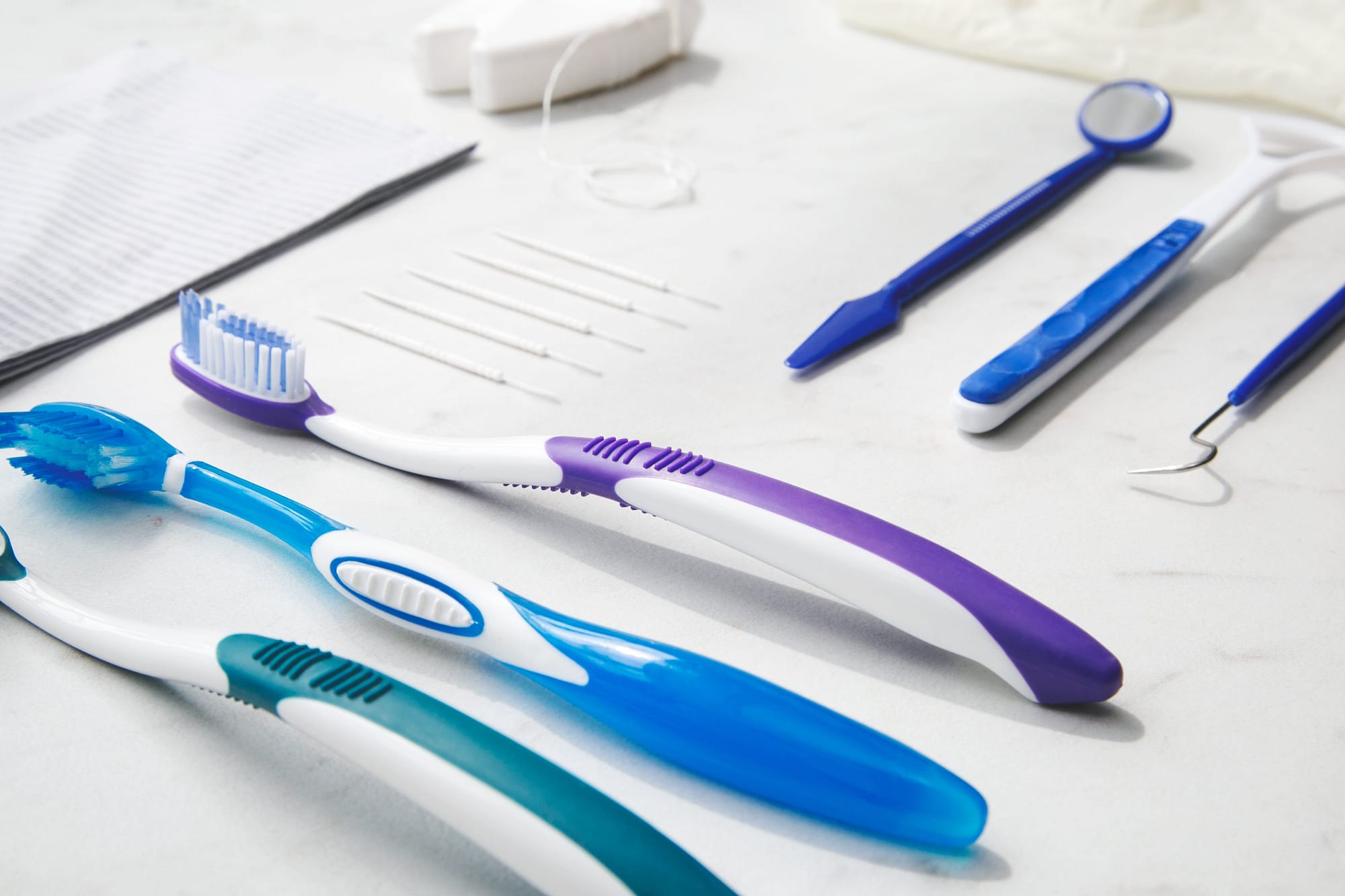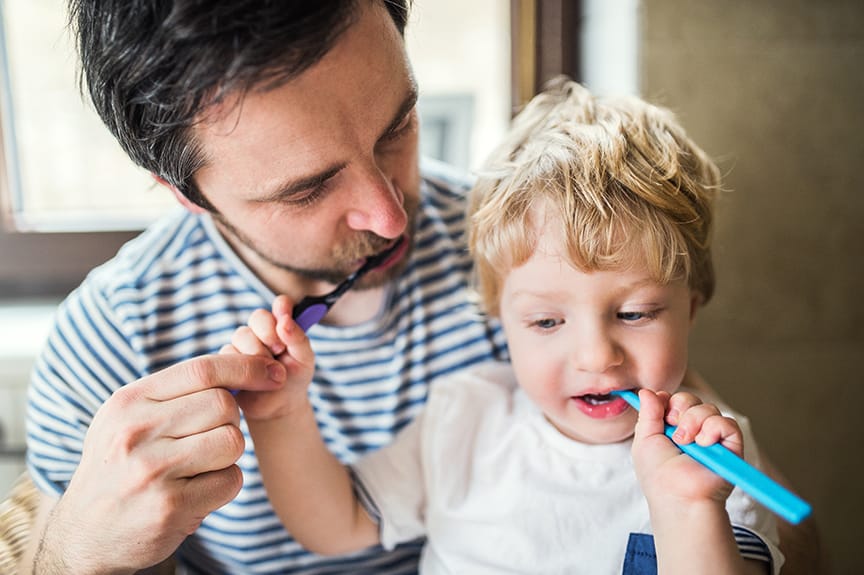Looking after your oral and dental health is important to your overall well-being and in making sure you catch any dental and oral health issues early, before they become big issues.
To save you from panicking just before your dental check-up, we’ve prepared some essential tips for you to practise in between appointments.
Tools of the trade
First off, it’s important to have a great toothbrush that gets into all of the hard to reach places in your mouth. This includes between teeth, where teeth meet the gums, and at the back of your mouth where your molars hide. Missing spots in your mouth can encourage harmful plaque and tartar build up causing bad breath and cavities.

You should brush your teeth for a minimum of two minutes. An electric toothbrush may be more appropriate for some people due to the ease of use. Electric toothbrushes provide the correct pressure, can let you know when two minutes is up, and require less manual effort when it comes to brushing.
If you have sensitive teeth, you can buy toothbrush heads that are softer on gums and teeth. Electric toothbrushes on the market have varying add-ons and features, so undoubtedly there will be one out there to suit you.
Toothpaste
Not all toothpastes are created equal. Many toothpastes are made to combat different oral health issues such as bad breath, discoloured teeth, sensitive teeth, or weak enamel. You can also buy toothpastes which more fluoride, utilise charcoal, or are completely organic. Our top pick is to use an all-rounder age appropriate fluoride toothpaste with added enamel protection against acidic and sugary food and drinks.
The art of flossing
Not flossing can cause plaque to build-up leading to tooth decay and gum disease. The right way to floss is to:
- Tear off about 20cm of floss and hold it tightly between your hands.
- Slide it gently up and down between your teeth.
- Curve the floss slightly around the base of the tooth.
- Go just under the gumline.
- Try not to force the floss as it may cut or bruise your gums.
- As you move to the next tooth, use a clean section of floss.
Other ways to clean in between teeth
For some people, flossing may not be appropriate because the spaces in between the teeth as too large or it is too difficult for people to do. Interdental brushes are the next best option. These small brushes can be used to ‘brush’ in between your teeth like toothpicks. However, unlike toothpicks that can cause damage to the gums, interdental brushes are gentle, come in different sizes and shapes, and are reusable. To know the right size, it is best discussed with your dentist and oral health therapist.
Putting it all together
Good brushing your teeth and cleaning in between your teeth by flossing or using interdental brushes should be a part of your daily oral health routine. Practising these steps morning and night will help keep teeth clean, keep bad breath away, and ensure you prevent cavities and other nasty dental issues.
You can start to improve your oral health at any time. Browse through our Resources page today to read other dentistry and oral health articles that will help in keeping both your teeth and gums in check.





